When discussing the dimensions of a full-size truck, it is important to understand that these vehicles are designed to balance the demands of payload capacity, engine performance, and overall versatility. Generally, a full-size pickup truck can range anywhere from about 17 to 20 feet in length. This length is usually contingent upon factors such as cab configuration, bed length, and the model in question. In my experience, many consumers favor full-size trucks for their robust construction and utility, which often include a variety of trim levels and features to suit different needs and tastes.

The variance in the size of full-size pickup trucks is not just a matter of length but also encompasses width and height, contributing to the vehicle’s overall road presence and cargo volume. Notably, the term ‘full-size’ typically refers to the larger end of the market’s offerings, distinguishing these trucks from smaller mid-size or compact models. When understanding the scale of these vehicles, considering their impact on fuel economy and the cost of ownership is also crucial. Features such as engine size, which often range from proficient V6s to powerful V8s, also play a significant role in the vehicle’s performance and operational expenses.
Contents
Key Takeaways
- Full-size pickup trucks typically measure between 17 to 20 feet in length, varying by model and configuration.
- These trucks are known for their substantial cargo capacity, robust features, and diverse trim options.
- Engine performance and ownership costs are important considerations when evaluating full-size trucks.
Defining Full-Size Pickup Trucks
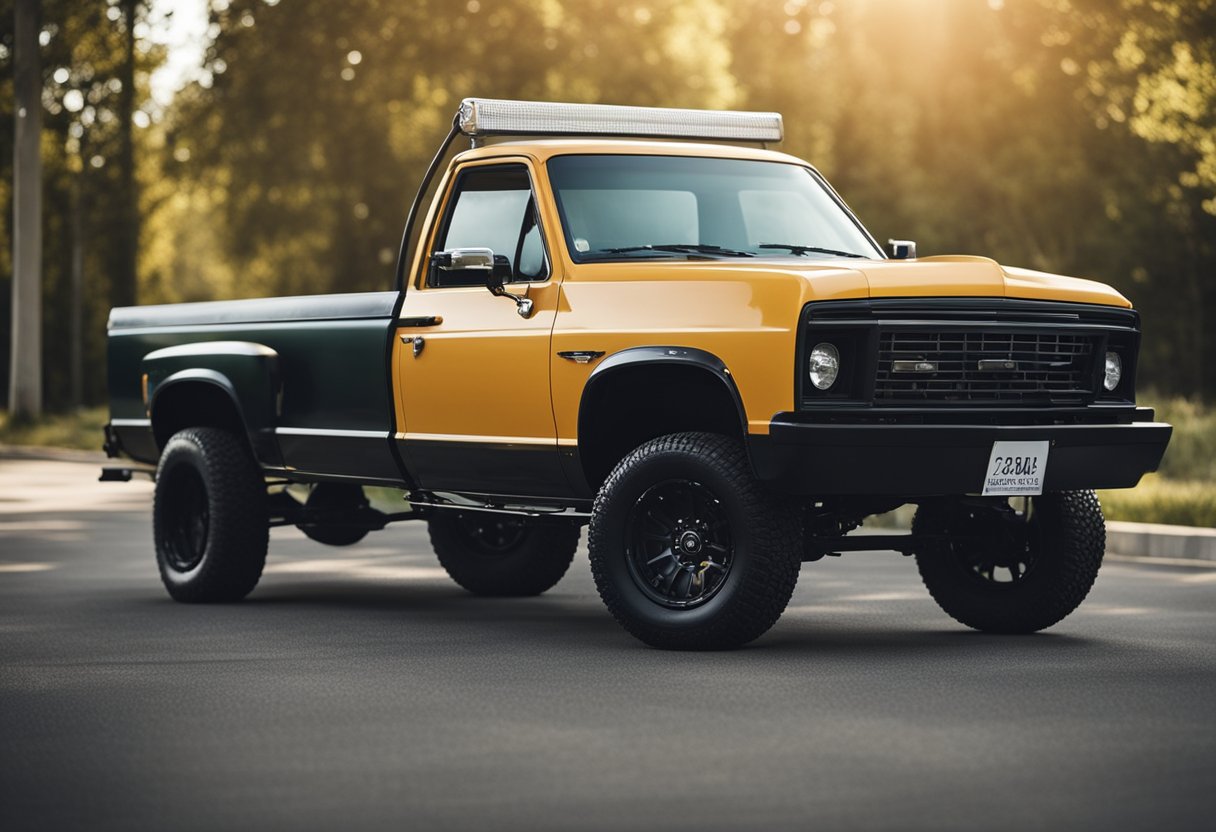
When discussing the automotive landscape, particularly in the US, I find it essential to clarify what constitutes a full-size pickup truck. These vehicles are distinguished by specific dimensions and capabilities deemed standard within the industry.
Industry Standards for Truck Size
Full-size pickup trucks are generally characterized by their body length, width, payload capacity, and towing capabilities. Adhering to industry benchmarks, full-size trucks often exceed 210 inches in length, with a width that typically approaches 80 inches, not including mirrors. These dimensions facilitate considerable cargo space and robust performance that smaller trucks can’t rival.
The Role of US Market in Full-Size Pickup Truck Segment
The US market plays a dominant role in the full-size pickup truck segment, influencing design and utility aspects. Full-size trucks in the US are synonymous with versatility and are often powered by V8 engines, though V6 and diesel options are increasingly prevalent, to meet a broad range of needs from hauling heavy payloads to daily commutes. As an American cultural icon, the full-size pickup truck caters to both functional requisites and lifestyle preferences, underscoring why size is more than just a measurement—it’s about capability and purpose.
Popular Full-Size Trucks on the Market
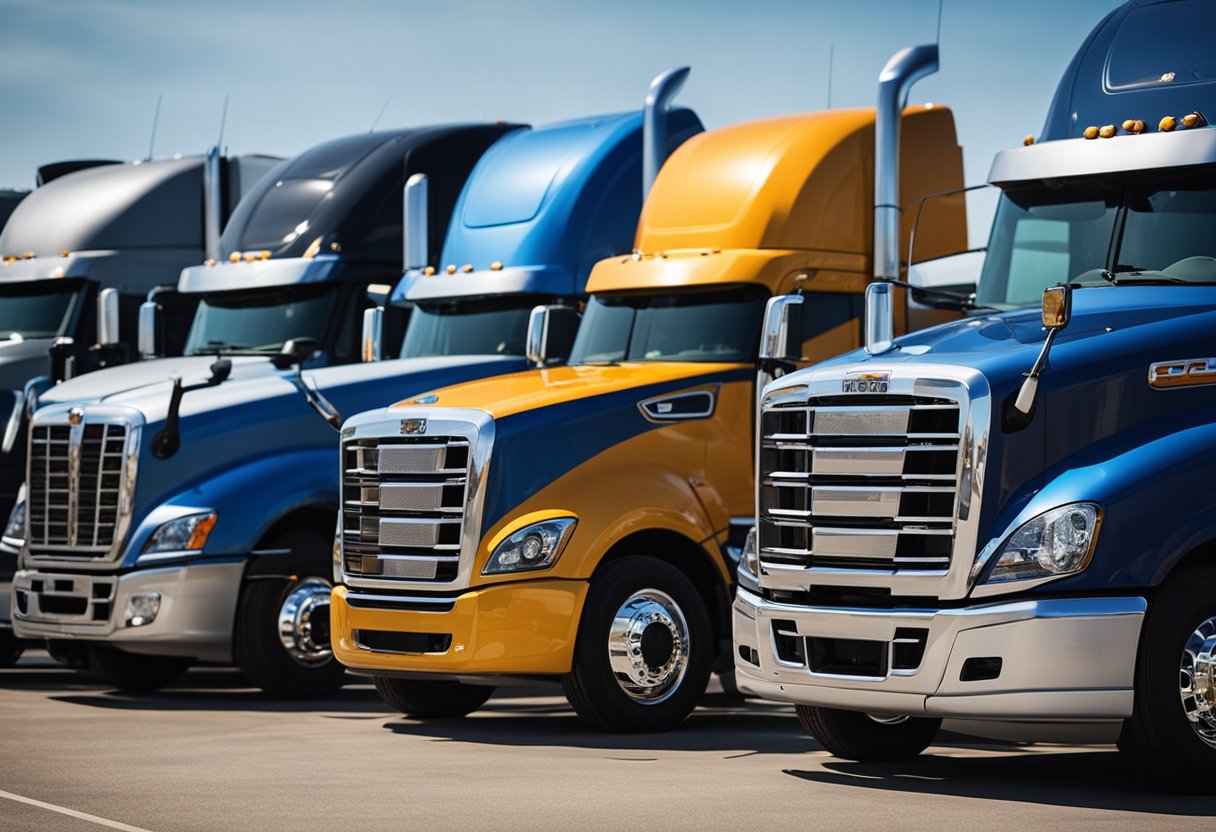
Reflecting on the variety of full-size trucks available, I can point out a few standout options known for their capabilities and market presence. These models represent the core of the segment and are often the choice for drivers seeking reliability, performance, and utility.
Ford F-Series
The Ford F-Series, with the Ford F-150 at the forefront, has a well-earned reputation for durability and versatility. Ford’s long history of craftsmanship and the truck’s advanced features like military-grade aluminum frames strike a balance between toughness and efficiency.
Chevrolet Silverado and GMC Sierra
Chevrolet Silverado and its corporate sibling, the GMC Sierra, share a platform but target slightly different markets. The Silverado is renowned for its robust powertrain options and workhorse abilities, while the Sierra often gears more toward the premium segment with upscale trims and appointments.
RAM Pickup Trucks
The RAM 1500 stands out with its smooth ride quality, afforded by its unique rear coil spring suspension. RAM offers impressive towing capability, which is essential for many full-size truck buyers. I find its refined interior and storage solutions to be among the best in class.
Japanese Manufacturers: Toyota and Nissan
Toyota and Nissan offer the Toyota Tundra and the Nissan Titan, respectively. Both manufacturers bring reliability and unique qualities to the table; the Tundra with its robust V8 and the Titan with a strong standard safety feature set. They inject competition into the market, challenging domestic manufacturers.
Each of these trucks reflects the manufacturer’s commitment to providing vehicles that meet the demands of various customers, whether for work, adventure, or everyday driving.
Understanding Truck Dimensions
https://www.youtube.com/watch?v=U1f2XIrZjsA&embed=true
When discussing full size trucks, it’s crucial to consider their overall length and width, bed length variations, and how cab configurations can significantly impact the vehicle’s size. I aim to illuminate these critical dimensions that are integral for drivers, manufacturers, and fleet operators alike.
Overall Length and Width
Full size trucks, often referred to as half-ton pickups, can vary in length depending on the model and configuration. Typically, these trucks measure about 230 inches in length, though this can extend up to 250 inches for larger models. The width of a pickup truck, without considering the side mirrors, is usually around 80 inches, which is a standard to keep in mind for garage space considerations.
Bed Length Variations
The bed length of a full size truck, a vital aspect of cargo space, comes in three primary sizes: short, standard, and long bed. Short beds are roughly 5 feet 8 inches, standard beds close to 6 feet 5 inches, and long beds can be up to 8 feet. These variations directly affect the vehicle’s overall length and can determine its suitability for different types of cargo.
Cab Configurations and Their Impact on Size
The cab of a truck defines its passenger capacity and consequently affects the overall vehicle size. Full size trucks come in several configurations: regular cab, extended cab, and crew cab. Regular cabs are smaller, often featuring a single row of seating, while extended cabs have additional storage space or small seats behind the main row. Crew cabs offer the most interior space with two full rows of seating, making the truck longer and more substantial in footprint.
Performance and Engine Options
https://www.youtube.com/watch?v=ji4OD31rBaI&embed=true
When I examine full-size trucks, I focus on the robust selection of engine variants they offer, each tailored to balance power and efficiency. These engines are the heart of the vehicle, significantly influencing towing capacity and the overall performance of the truck.
Engine Variants Across Models
Full-size trucks typically come equipped with a range of engine options. For instance, a V-8 engine is a common choice for drivers looking for power and durability. Alternatively, twin-turbo V-6 engines provide a balance of power and improved fuel efficiency, making them a popular option as well. Many manufacturers have also introduced diesel engines for their superior torque figures, which are excellent for heavy-duty tasks. Recently, there has been a trend toward hybrid powertrains in full-size trucks, blending traditional combustion engines with electric technology to enhance fuel economy without compromising on strength.
Towing Capacity and Powertrain
The towing capacity of a full-size truck is closely linked to its engine and powertrain configuration. For example:
- Standard V-8: Capable of towing up to 10,000 lbs.
- Twin-Turbo V-6: May tow between 8,000 to 12,000 lbs. depending on specific model tuning.
- Diesel: Engine options can often exceed 12,000 lbs. in towing capacity due to high torque output.
The choice of a hybrid powertrain can affect the vehicle’s towing capacity due to the added weight of the battery, but typically these systems are engineered to maintain competitive towing performance. The exact figures vary based on the make and model of the truck, and manufacturers calibrate each powertrain to offer a balance of towing prowess and daily drivability.
Trim Levels and Features

In discussing full-size trucks, it’s crucial to understand that trim levels significantly affect the truck’s overall comfort, technology, and features. The variety of trims can cater to different needs, ranging from the practical demands of trade jobs to the desire for a luxury vehicle experience.
Entry-Level versus Luxury Trims
Entry-level trims often favor functionality and affordability. These trims typically come with the essentials, which may include basic vinyl seating, minimal infotainment features, and standard safety options. For example, trucks at the base level are more focused on ruggedness and the work capability essential for many jobs.
Contrastingly, luxury trims transform a truck into a status symbol, decked out with premium materials and enhancements. Leather seating, advanced navigation systems, and high-quality interior finishes define these higher trims. Trucks like these reflect an appreciation for style and are often equipped with better sound insulation and more robust engines, which may be reflected in their overall length due to additional features and design considerations.
Technology and Comfort Options
As I move up the trim ladder, the availability of technology and comfort options increases. Mid to high trims typically boast touchscreens with smartphone integration, multi-zone climate control, and advanced driver-assist systems. Options for upgrades can include, but are not limited to, heated and ventilated seats, a sunroof, and state-of-the-art audio systems. These amenities enhance the driving experience by providing both comfort and convenience.
Moreover, the integration of safety technology is a clear demarcation between trim levels. Automatic emergency braking and forward collision warning systems are prime examples of safety features more commonly found on higher trims or as part of optional packages, with some trims offering these as standard features to enhance occupant safety.
Economic Factors of Full-Size Trucks
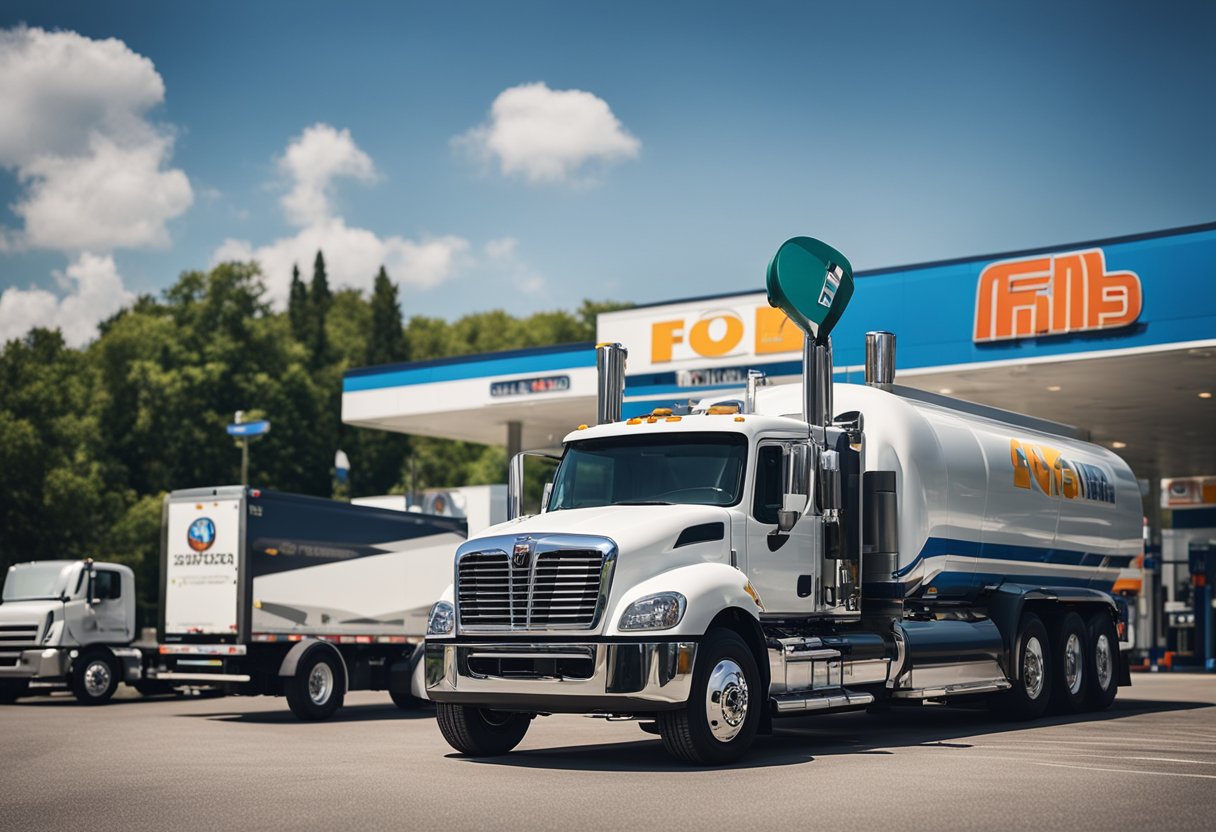
In evaluating full-size trucks, it’s imperative to look closely at their fuel economy and operating costs, which directly impact their overall economic viability. Similarly, pricing and value for money play a significant role in their assessment, ensuring that the funds invested are justified.
Fuel Economy and Operating Costs
Full-size trucks often come with considerable fuel economy considerations. With larger engines and greater capacities, these trucks typically consume more fuel than smaller vehicles, making fuel efficiency a pivotal factor in total operating costs. For instance, I may prioritize trucks with advanced technology such as turbocharging or direct injection, which can enhance fuel economy. Maintenance is another cost driver, with larger trucks generally incurring higher costs for parts and services.
Pricing and Value for Money
When I consider purchasing a full-size truck, the sticker price is only the beginning. The value for my money extends to durability, the longevity of the vehicle, and potential resale value. Trucks designed with a strong frame and quality materials may offer more economic benefits over time, despite a higher initial price. Additionally, trucks with favorable resale value, like those with recognized reliability, can mitigate the cost of ownership, providing me with a more favorable long-term investment.
Full-Size Pickup Trucks and Alternatives
https://www.youtube.com/watch?v=rvWcpWUwyn8&embed=true
In my examination of full-size trucks, I differentiate them from SUVs and mid-size trucks, considering aspects such as dimensions, capabilities, and typical uses. I also weigh the merits of full-size pickups against their heavy-duty counterparts, taking note of the specific models that dominate the market.
Comparison with SUVs and Mid-size Trucks
SUVs and mid-size trucks, like the Chevy Colorado and Ford Ranger, offer versatility but typically fall short of full-size trucks’ cargo capacity and towing power. For instance, the 2023 GMC Sierra 1500 and Dodge Ram 1500 are examples of full-size trucks that provide substantial towing capabilities and larger bed sizes than mid-size trucks like the Toyota Tacoma or the Jeep Gladiator. It’s important to note that while an SUV like the Jeep Wagoneer might offer a comfortable ride and ample interior space, it cannot match the payload and towing strengths of a Chevrolet Silverado or a Ford F-150.
-
Payload Capacity:
- Mid-size trucks (e.g. Tacoma, Ranger): Ranges from approximately 1,500 to 1,900 pounds
- Full-size trucks (e.g. Silverado, Ram 1500): Generally exceeds 2,000 pounds, some models going much higher
-
Towing Capacity:
- Mid-size trucks: Can tow anywhere from 3,500 to 7,000 pounds
- Full-size trucks: Often starts at around 7,500 pounds, with many models capable of towing 10,000 pounds or more
Choosing Between Full-Size and Heavy-Duty Trucks
When debating between a full-size pickup and a heavy-duty model, I consider the intended usage and necessity for increased capability. Full-size trucks, like the 2023 GMC Sierra 1500 or the iconic Dodge Ram 1500, serve well for daily use and moderate towing. However, for more demanding tasks, one might look towards heavy-duty trucks which excel in payload and towing capacities, such as the Ram 2500 or Nissan Titan XD.
Chart: Full-Size vs. Heavy-Duty Trucks
| Feature | Full-Size Pickup (e.g. Silverado) | Heavy-Duty Pickup (e.g. Ram 2500) |
|---|---|---|
| Engine Options | V6, V8, turbocharged, diesel | Larger V8, turbo diesel |
| Towing Capacity | Up to 13,000 lbs (approx.) | Up to 20,000 lbs (approx.) |
| Payload | Up to 2,300 lbs (approx.) | Up to 4,000 lbs (approx.) |
| Daily Usability | Better fuel economy, easier to maneuver | Less fuel economy, more challenging drive |
| Cost | Generally more affordable | Typically higher price point |
Deciding on the right truck involves assessing my practical needs against the specifications and capabilities offered by each category. Full-size trucks strike a balance between everyday practicality and performance, whereas heavy-duty trucks are preferable for maximum towing and payload requirements.
Future Trends in Full-Size Truck Market
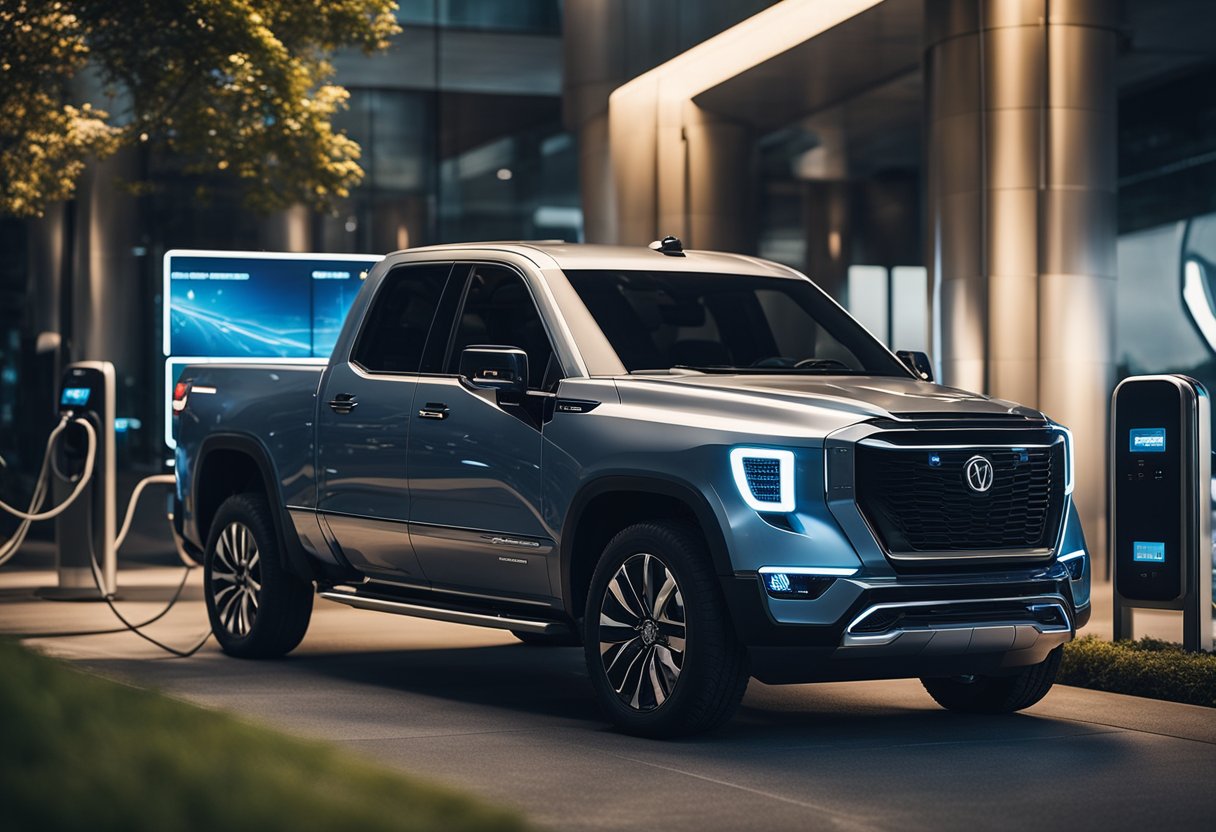
In the ever-evolving automotive landscape, the full-size truck market is no exception. Automakers are funneling resources into greener technologies and smarter features. As we move forward, two areas encapsulate the essence of forthcoming changes: the rise of hybrid and electric models, and substantial technological innovations.
Hybrid and Electric Full-Size Trucks
I’ve observed an undeniable shift toward hybridization and electrification among full-size trucks. Hybrid models are becoming more prominent, blending traditional combustion engines with electric power to increase efficiency without sacrificing performance. For example, the 2023 Ford F-150 offers a robust hybrid variant, demonstrating how mainstream models are joining the eco-friendly movement. On the electric frontier, electric vehicles (EVs) are poised to take significant market share, with various automakers announcing plans to electrify their full-size truck offerings. This trend is changing the industry’s fuel dynamics, providing consumers with powerful yet cleaner alternatives.
Innovations in Truck Technology and Features
The future is also ripe with innovations in truck technology. Automakers are integrating advanced features designed to enhance the driving experience, safety, and utility of full-size trucks. From state-of-the-art infotainment systems to autonomous driving aids, the level of sophistication is increasing. Connectivity features are standard, and I anticipate further integration of artificial intelligence to streamline vehicle operation and maintenance. Moreover, expect continuous improvements in towing and payload capacities, as these remain critical attributes for truck buyers.
By focusing on these influential sectors, I’ve highlighted how the landscape of full-size trucks is evolving. Witnessing the adaptability of the market, I’m confident that these technological advancements and environmental considerations will significantly shape the future of the full-size truck segment.
Frequently Asked Questions
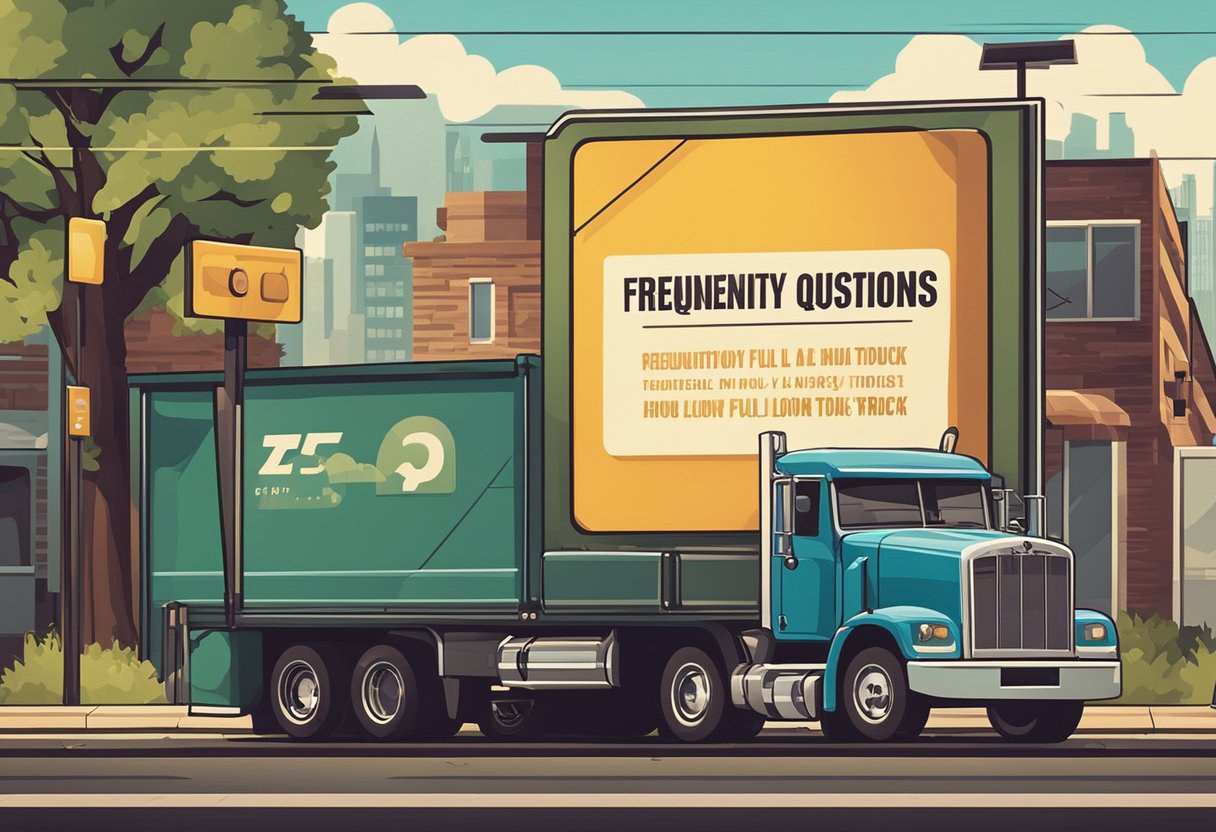
In this section, I address some common queries about the size specifications of full-size trucks to provide clarity on what you can expect from these vehicles in terms of dimensions and space requirements.
What are the dimensions of an 8-foot truck bed?
An 8-foot truck bed typically measures approximately 8 feet in length, which is about 2.44 meters. The width can vary slightly among manufacturers, but it is generally around 5 to 6 feet wide.
What are the standard bed options for full-size pickup trucks?
Full-size pickup trucks usually come with three standard bed options: the short bed, which is around 5.5 to 5.8 feet, the standard bed, which is about 6.5 feet, and the long bed, which is the 8-foot option.
What is the average length of a full-size pickup truck in meters?
The average length of a full-size pickup truck is about 5.8 meters, but this can vary depending on the specific model and the bed length chosen by the buyer.
What size garage is typically required to accommodate a full-size truck?
A standard two-car garage should be ample to accommodate a full-size truck, but I recommend a garage that is at least 22 to 24 feet in depth to ensure there’s enough room for comfortable entry and exit from the vehicle.
How do different full-size truck models compare in length?
Different full-size truck models have varying lengths. For instance, compact models can be shorter than 5.2 meters, while heavy-duty trucks might exceed 6.4 meters in length. Variations arise from different cab configurations and bed lengths offered by manufacturers.
What is the typical length of a crew cab long bed truck?
The typical length of a crew cab long bed truck can be upwards of 6.7 meters, taking into account the additional space required for both the full-sized cab and the long bed.

